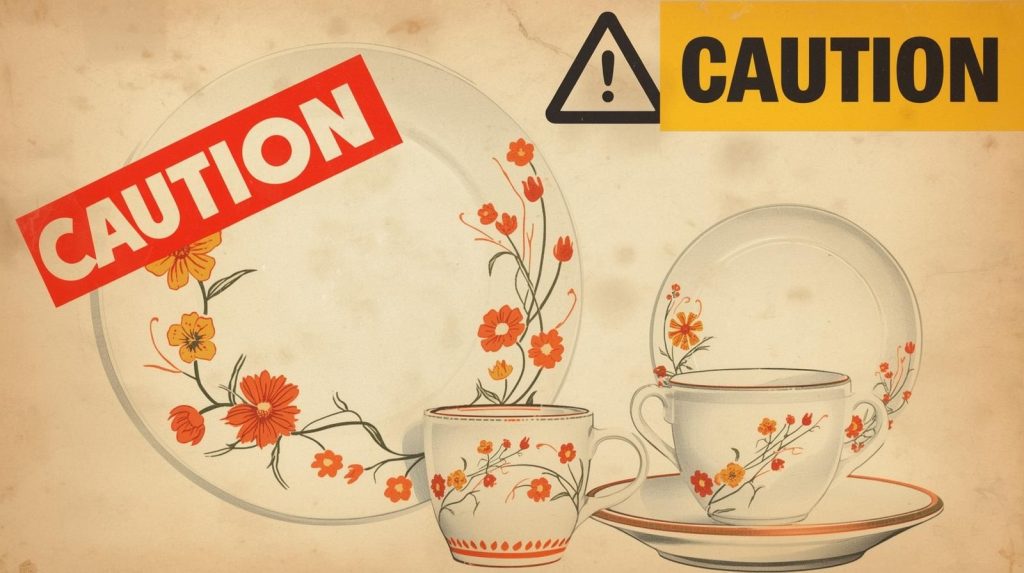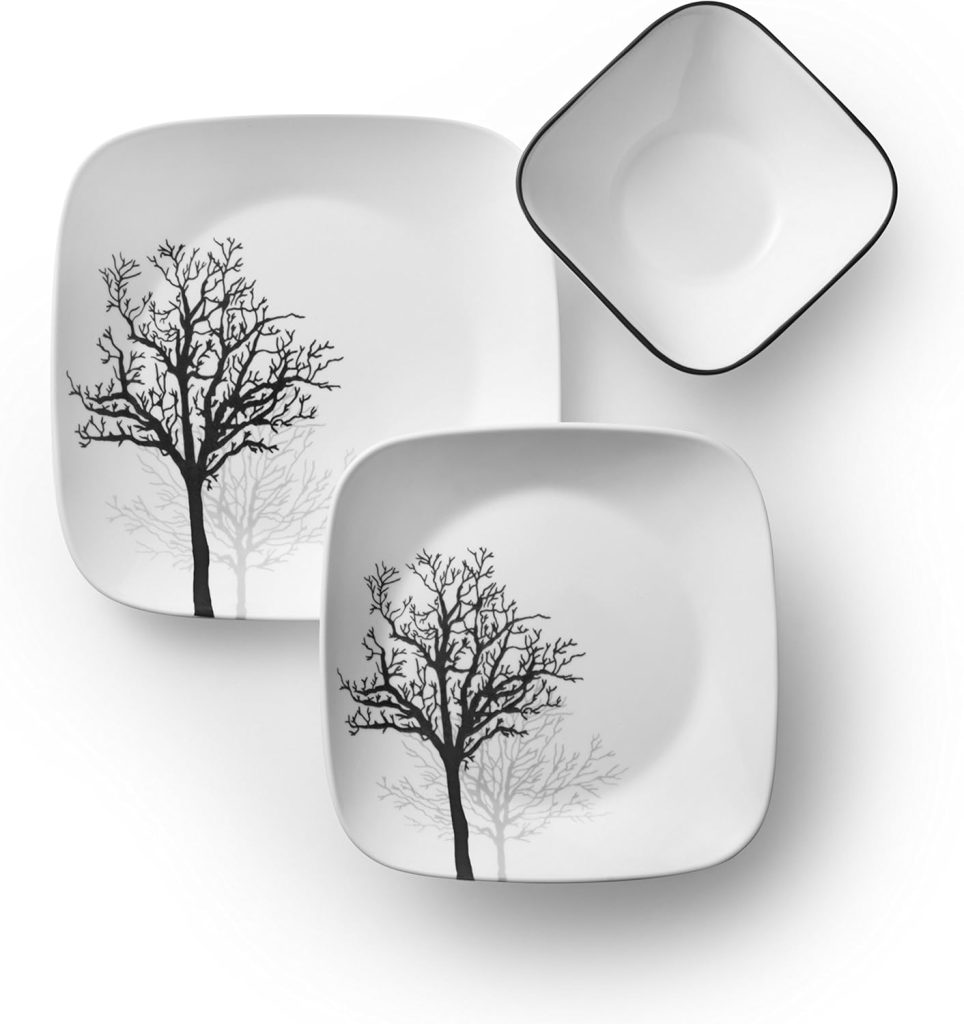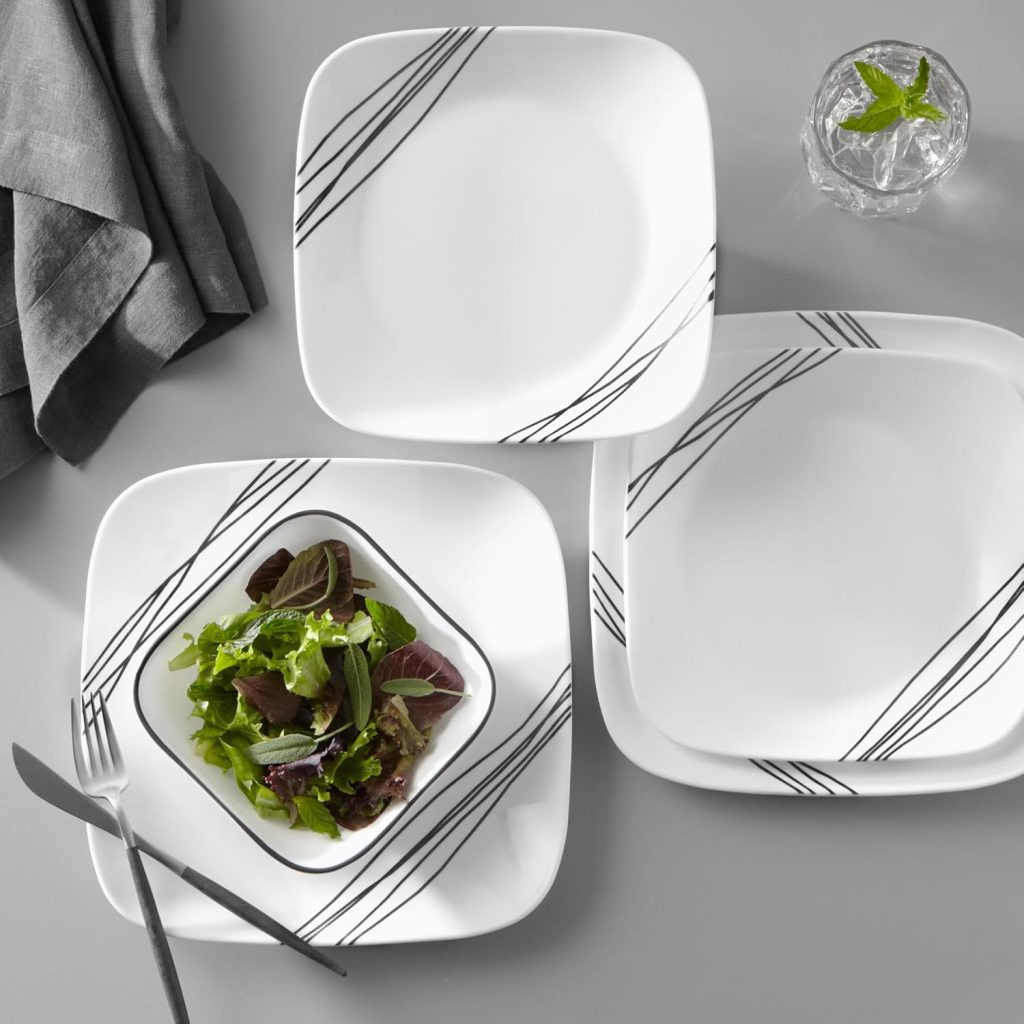You’re ransacking through your grandmother’s kitchen cupboards, and there it is, a set of those distinctive Corelle dishes with the cheerful butterflies and golden flowers.
They’ve survived decades, countless dinner parties, and probably a few tumbles from kitchen counters without so much as a chip.
But before you start planning your next Sunday roast on these seemingly indestructible plates, there’s something crucial you need to know.
The truth about vintage Corelle patterns manufactured before 2005 isn’t just about nostalgia and collecting—it’s about safety, value, and making informed decisions about the dishes that might be sitting in your cupboards right now.
What you discover might completely change how you view these beloved pieces of kitchenware history.
The Safety Reality: What You Need to Know About Pre-2005 Corelle
The Lead Concern That Changed Everything
Here’s the uncomfortable truth that’s been making headlines: Corelle dinnerware from before 2005 contains concerns for high levels of Lead.
This isn’t just internet scaremongering, it’s a genuine safety issue that’s prompted official warnings from health departments and consumer safety advocates.
The Official Stance
Corelle now recommends using their pre-2005 dishes as “decorative pieces” due to concerns for high levels of Lead.
This recommendation comes directly from the manufacturer, not from external critics looking to create controversy.
Why 2005 Matters
The year 2005 represents a critical turning point in Corelle’s manufacturing process. Before this date, the company used lead-based glazes and decorative elements in its patterned dishes.
After 2005, they reformulated their products to eliminate lead concerns, making newer Corelle safe for everyday use.
Understanding the Health Risks
Lead exposure isn’t something to take lightly, particularly for families with children. The toxic metal can cause:
- Developmental delays in children
- Neurological problems
- Digestive issues
- Kidney damage
Which Patterns Are Affected?
All Corelle dinnerware manufactured before 2005 potentially contains high lead levels in its glazes and patterns. However, some patterns are more problematic than others:
High-Risk Patterns (1970s – Heavy Lead Content):
- Butterfly Gold (1970s)
- Spring Blossom Green (Crazy Daisy)
- Old Town Blue
- Snowflake Blue
- Woodland
- Blue Heather
Medium-Risk Patterns (1980s – Moderate Lead Content):
- Flirtation
- Harvest Home
- Spice O’ Life
- Sunshine series (Blueberry blue, Ginger red, Honeydew green)
- Cornflower
Variable-Risk Patterns (1990s-2005 – Mixed Lead Levels):
- Abundance, Berries, Blue Hearts, Bouquet
- Callaway, Christmas Tree, Floral, Forever Yours
- Ivy, Midnight, Sandstone, Sandwich
- Swirl, Twilight, Vintage
Visual Identification Tips:
- Bright, vibrant colours
- Metallic accents (particularly gold)
- Detailed floral patterns
- Designs with heavy colour saturation.
The Collector’s Guide: Popular Corelle Patterns Before 2005

Complete List of Pre-2005 Corelle Patterns
1970s Patterns:
- Butterfly Gold – Golden butterflies and flowers on a white background
- Spring Blossom Green (Crazy Daisy) – Green flowers and leaves pattern
- Old Town Blue – Blue onion-inspired designs by Cynthia Gerow (1972)
- Snowflake Blue – Delicate blue snowflake patterns
- Woodland – Forest-themed designs with browns and greens
- Winter Frost White – Plain white with subtle frost patterns
- Blue Heather – Soft blue floral designs
1980s Patterns:
- Flirtation – Romantic floral motifs
- Harvest Home – Autumn-themed designs
- Spice O’ Life – Kitchen herb and spice patterns
- Sunshine – Available in multiple colour options:
- Blueberry blue
- Ginger red
- Honeydew green
- Cornflower – Blue cornflower designs (continued from 1950s)
1990s-2005 Patterns:
- Abundance – Fruit and vegetable designs
- Berries – Berry motifs in various colours
- Blue Hearts – Simple blue heart patterns
- Bouquet – Mixed floral arrangements
- Callaway – Golf-themed designs
- Christmas Tree – Holiday seasonal pattern
- Floral – Generic floral designs
- Forever Yours – Romantic themed patterns
- Ivy – Green ivy leaf designs
- Midnight – Dark, elegant patterns
- Sandstone – Earth-toned geometric designs
- Sandwich – Kitchen-themed patterns
- Swirl – Abstract swirl designs
- Twilight – Evening-themed colours
- Vintage – Retro-inspired designs

Value Ranges by Pattern:
- Butterfly Gold
- Old Town Blue
- Spring Blossom Green
- Limited editions
- Common 1990s patterns
Limited Edition and Promotional Patterns
Special Releases:
- Nature’s Bounty (1971) – Early limited edition
- Renaissance (1970) – Ornate decorative pattern
- Medallion (1972-1974) – Shell Oil promotional piece
- Various holiday patterns – Christmas, Easter, seasonal designs.
Pattern Identification: Your Step-by-Step Guide
1970s Patterns (High Lead Risk):
- Butterfly Gold: Golden butterflies and flowers
- Spring Blossom Green: Green flowers and leaves
- Old Town Blue: Blue onion-inspired designs
- Snowflake Blue: Delicate blue snowflake patterns
- Woodland: Forest themes with browns and greens
- Blue Heather: Soft blue floral designs
1980s Patterns (Moderate to High Lead Risk):
- Flirtation: Romantic floral motifs
- Harvest Home: Autumn-themed designs
- Spice O’ Life: Kitchen herb patterns
- Sunshine series: Available in Blueberry blue, Ginger red, Honeydew green
- Cornflower: Blue cornflower designs
1990s-2005 Patterns (Variable Lead Risk):
- Abundance: Fruit and vegetable designs
- Berries: Berry motifs in various colours
- Blue Hearts: Simple blue heart patterns
- Bouquet: Mixed floral arrangements
- Callaway: Golf-themed designs
- Christmas Tree: Holiday seasonal pattern
- Floral: Generic floral designs
- Forever Yours: Romantic themed patterns
- Ivy: Green ivy leaf designs
- Midnight: Dark, elegant patterns
- Sandstone: Earth-toned geometric designs
- Sandwich: Kitchen-themed patterns
- Swirl: Abstract swirl designs
- Twilight: Evening-themed colours
- Vintage: Retro-inspired designs.

Dating Your Dishes
| Era | Pattern Characteristics | Notable Patterns |
| Early 1970s | Bold, nature-inspired designs | Butterfly Gold, Spring Blossom |
| Mid-1970s | Geometric and modern patterns | Old Town Blue, Snowflake Blue |
| Late 1970s-80s | Transitional designs | Woodland, various florals |
| 1990s-2005 | Contemporary patterns | More subdued designs |
The Collector’s Market: Values and Trends
Current Market Values
Complete Sets: Prices vary significantly based on pattern rarity, condition, and market demand. Always check with collectors, online marketplaces, and auction sites for current pricing.
Individual Pieces:
- Dinner plates
- Serving pieces
- Specialty items (rare bowls, platters, unique pieces)
Factors Affecting Value:
- Pattern rarity and popularity
- Condition (chips, cracks, fading)
- Completeness of sets
- Regional demand differences
- Current collector trends
Where to Buy and Sell
Online Marketplaces:
- eBay (largest selection)
- Etsy (curated vintage pieces)
- Facebook Marketplace (local finds)
- Specialist vintage dish forums
Physical Locations:
- Antique shops
- Car boot sales
- Estate sales
- Charity shops
Investment Potential
Certain patterns have shown consistent value appreciation over time:
- 1970s patterns: Tend to hold value better due to the nostalgia factor
- Limited editions: Can appreciate significantly, but with higher volatility
- Complete sets: Generally more stable investments than individual pieces
For Current Values:
- Research recent sales on multiple platforms
- Connect with established collectors in online communities
- Consider having rare pieces professionally appraised
- Monitor market trends through collector forums and social media groups.
Safety Guidelines: What to Do with Your Pre-2005 Corelle
The Three Options
1. Display Only: Corelle products purchased after 2005 are safe and comply with FDA regulations, but pre-2005 pieces are best used decoratively.
2. Safe Disposal: If you’re concerned about safety, proper disposal is important:
- Contact your local council for guidance
- Don’t put in regular recycling
- Consider donating to collectors who understand the risks
3. Continued Use (With Caution): The decision to get rid of your Corelle dishes, utilise them in display cases, or continue consuming food on them is a personal one.
Warning Signs to Watch For
Avoid eating off older Corelle dinnerware if it shows obvious signs of deterioration; if the glaze is worn, if the paint is melting.
Red Flags:
- Visible wear on patterns
- Chips or cracks
- Fading colours
- Rough texture where smooth before.
Modern Alternatives: Safe Corelle Options
Post-2005 Corelle Patterns
Current Corelle patterns are manufactured without lead concerns and offer:
- Same durability as vintage pieces
- Modern designs
- Complete safety compliance
- Warranty protection
Recommended Modern Patterns
Classic White Collections:
- Winter Frost White (updated version)
- Pure White
- Livingware
Contemporary Designs:
- Timber Shadows
- Swept
- Boutique.
Conclusion: Making Informed Decisions About Your Vintage Corelle
The story of Corelle patterns before 2005 is complex, a tale of beloved design, nostalgic value, and modern safety concerns.
Whether you’re a collector seeking rare pieces, a concerned homeowner checking your cupboards, or someone trying to complete a cherished set, understanding both the risks and rewards is essential.
Your vintage Corelle doesn’t have to end up in the bin. These pieces represent decades of design history and family memories.
By making informed decisions about how to use, display, or collect them, you can appreciate their beauty while prioritising safety.
Ready to take action? Start by identifying your patterns using this guide, then decide whether they’re destined for display, collection, or safe disposal.
Remember, the most important thing is making choices that work for your family’s safety and your personal values.
Have vintage Corelle patterns to identify or stories to share? The collector community is always eager to help with identification and share experiences.
Your vintage dishes might be more valuable or more concerning than you think.
This article is based on current safety information and market research. Always consult with healthcare professionals about lead exposure concerns and verify current safety guidelines from official sources.